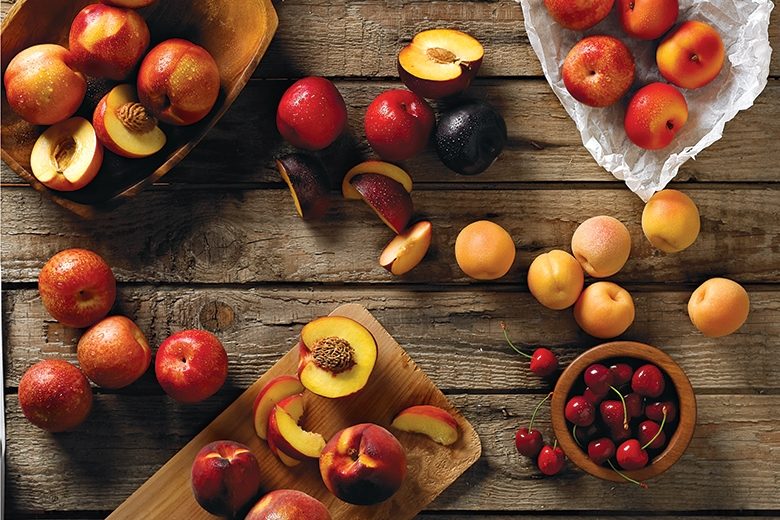



Article by: Hari Yellina (Orchard Tech)
The Pilbara may be an unlikely future stonefruit-producing corner of Australia. A crop of stonefruit was harvested in the eastern Pilbara as part of a proof-of-concept trial by the Department of Primary Industries and Regional Development (DPIRD). While the Pilbara is renowned for its extreme heat, elevated inland areas of the region often achieve the near-freezing overnight temperatures in winter required to produce stonefruit.
The 0.2 hectares irrigated trial was established at Martu Farm near Newman in November 2018 with 40 trees, comprising a mix of low chill peach and nectarine varieties. The trial was undertaken as part of the department’s Transforming Agriculture in the Pilbara (TAP) project, to explore the potential for irrigated horticulture, fodder and field crop production in the region. TAP project manager Chris Schelfhout said the trial, which was harvested in late October, produced some encouraging results.
The trees were irrigated using a micro-sprinkler system, which encourages grass to grow in the inter-row area to provide a cooling effect over the summer months. Mr Schelfhout said if the further investigation proved stonefruit production was viable in the eastern Pilbara, it could provide a new crop option for pastoralists and local Aboriginal businesses. The trial is one of the many outcomes of the TAP project over the past three years, which has worked with industry partners on several irrigated systems research initiatives.
Extensive field survey, sampling and analysis work is investigating land and water resources suitable for irrigation development in the Karratha hinterland, lower DeGrey and Shaw River areas and Newman district. The project has also examined the potential and challenges associated with using mine dewater for irrigated agriculture, as well as evaluated a range of grain, forage and fibre crops for cultivation in the Pilbara. A final report on the findings from the project will be produced at its conclusion in 2022.